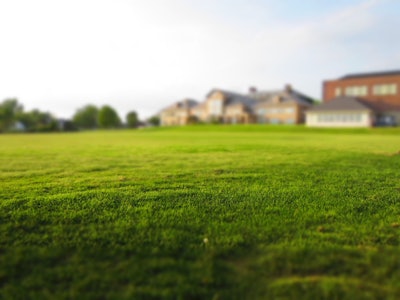 Photo: Pixabay
Photo: PixabaySooner or later every professional landscaper is confronted with a barren parcel of land and is asked to turn it into a lush, fertile lawn evoking images of a PGA-quality golf course.
Doing so requires nearly every skill a landscaper can possess. But the rewards of establishing a healthy, viable lawn where rocks and weeds once reigned have many benefits. Personal and professional pride are certainly rewards enough, but bringing such a dramatic change to a client’s landscape is a terrific way build a relationship with that customer and sell them on the services your business has to offer.
In many cases, landscapers are called in to a new development, which is a fairly simple affair. But yards in older, established neighborhoods can be a greater challenge. Lawns die for many reasons.
“You name it and I’ve seen it,” says Matt Giese, Midwestern states field technical manager for Syngenta. “Pets, overuse and neglect are common culprits when a lawn dies,” he notes. “And there are always indicators you can study on your initial survey of the property. Are there large trees present? Is the yard also being used as a driveway? Silly things like that may not seem important. But these factors do play into what your long-term viability for that area is in terms of a healthy lawn. So you have to correct some of those underlying problems to ensure your eventual success.”
“We like to set up an appointment and walk a dead turf property with the owner before we do anything else,” says Jim Davis, a regional vice president with Moore’s Landscaping in Northbrook, Illinois. “We’re really looking at several things in that initial tour: The basic history of the site can tell you a lot about the challenges you’re up against. But you also check basic things like the irrigation system to see if it’s been damaged. Or the site might not have an irrigation system – and again, that could be a key factor in the lawn’s failure. So we might end up determining that installing an irrigation system is necessary to reestablish turf. Lots of things come out in that discovery process.”
“The first question I generally try to answer in a situation like that is: Can the normal cultural practices I follow in an area for quality turf bring this area back to a healthy turf grass form?” Giese adds. “Answering that question gives you a lot of direction in how to proceed. If the answer to that question is yes, then you’ll be able to bring it back by following basic cultivation procedures, which include aeration, some additional seeding, irrigation and fertilization.”
Of course delivering a beautiful lawn is your ultimate goal. But many times you’ll first have to convince the property owner their idea of what constitutes a gorgeous lawn may not be practical.
“The guy will always tell you if he’s a golfer,” Davis notes. “One time, I had a new client with lots of barren spots in his backyard, and of course he wanted it look like a putting green. But he had maples with large, above-ground roots on the property.”
Luckily Davis arrived when he did. The homeowner’s plan, it turned out, was to take an axe and simply hack the exposed roots out of the ground to facilitate his planned golf course lawn. “And he wanted to keep the trees!” Davis adds. It took a bit of convincing, but Davis was finally able to sell the homeowner on reseeding up to the root systems and putting edging in and mulching with perennials and other ground cover to address the root systems.
Seed versus sod and other variables
Once you’ve diagnosed the basic problem and agreed with the homeowner on an overall approach, Giese says it’s time to dig a little deeper – literally.
“I think you have to start out with what you can’t see, and that’s what’s going on beneath the soil’s surface,” he says. “Most of the time, a lot of issues you’re dealing with are soil related, whether that’s compaction, grubs or improper pH balances. Think of your soil analysis as a road map that’s going to allow you to make decisions to correct those problems.”
“In a worst-case scenario you’re going to have to remove the soil or bring new soil in to supplement the existing soil mix,” Davis says. “You may want to do a Roundup spray to get rid of weeds if they’re a problem. If things aren’t that bad, you may have to remove only the top layer of soil (based on the results of the soil analysis). So we might take out two or three inches of soil and a put a proper bed layer in.”
Deciding on the variety of grass – and whether or not you’ll seed or sod the yard – is generally your next move. Most homeowners want to see an instant lawn, so they’ll probably lean in that direction when asked. But, as Davis points out, sodding is typically more expensive.
“Another problem is that homeowners think that once sod is laid, the job is done,” Giese adds. “They think they don’t have to worry about it, that it’s pretty much taking care of itself. And that’s not necessarily true. Sod requires the same needs that a seeded lawn will after it has germinated and established itself. In certain situations sod is warranted. If you have a sloped area with the potential for erosion, then sod makes a lot of sense.”
In a sense, the seed suffers from similar image problems, Davis notes. “Who’s caring for it?” he asks. “That can be a problem with seeding. If your customer isn’t familiar with seeding – they’ll probably think you just throw it down, blanket it and water it







